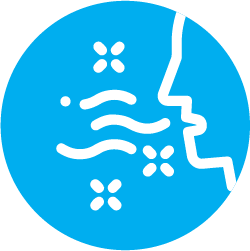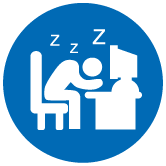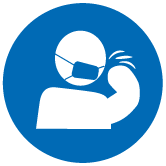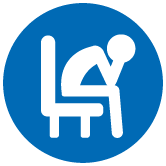
You Are What You Breathe
Here are the topics we will be covering; jump to any section you find relevant to you:
What is Indoor Air Quality (IAQ)?
What are the Costs of Bad IAQ?
What are the Benefits of Good IAQ?
How can you improve your IAQ?
What is Indoor Air Quality (IAQ)?
What is in my Indoor Air?

AIRBORNE PARTICLES
PM particulates dust, dirt, pollen, smoke, hair, and other sources.
ODOURS AND GASSES
Emissions from cleaning agents, plumbing smells, office equipment and perfumes.
VOLATILE ORGANIC COMPOUNDS (VOCS)
Paints, glues, varnishes, preservatives, office copiers and printers, stored chemicals.
MICROORGANISMS
Fungi, mold, bacteria, viruses (i.e. COVID-19), yeast and mites.What are the Costs of Poor IAQ?
50%
$16B
Sick Building Syndrome (SBS) is a phenomenon being researched in buildings. Sick Building Syndrome is described as acute symptoms that occupants experience in specific spaces (such as an office) – and symptoms that improve when they leave that space.
Symptoms of poor air quality include:






skin, throat
What are the Benefits of Good IAQ?
*Higher efficiency filters refers to the filter’s efficiency at filtering particles out of the air – not to be confused with energy efficiency.
One study (Building and Environment, Vol.43) estimates the cost and benefits of a high efficiency filter as follows:
*Higher efficiency filters refers to the filter’s efficiency at filtering particles out of the air – not to be confused with energy efficiency.
| MERV 8 | MERV 10 | MERV 13 | |
|---|---|---|---|
| % of Particle Removed* | 50 - 75% | 80 - 95% | > 95% |
| Cost per year per occupant | $2.64 | $2.85 | $3.00 |
| Benefits per year per occupant | $45 | $90 | $135 |
| *based on 3 to 10 micrometre particles | |||
How Can You Improve Your IAQ?
In an Office Building Setting

Here are the steps that a certified BC Comfort technician will take to ensure that your IAQ meets and exceeds all standards.
Perform an Indoor Air Quality (IAQ) test to identify pollution level and sources.
Recommend solutions based on the test results.
Service or upgrade your HVAC systems to improve your Indoor Air Quality

